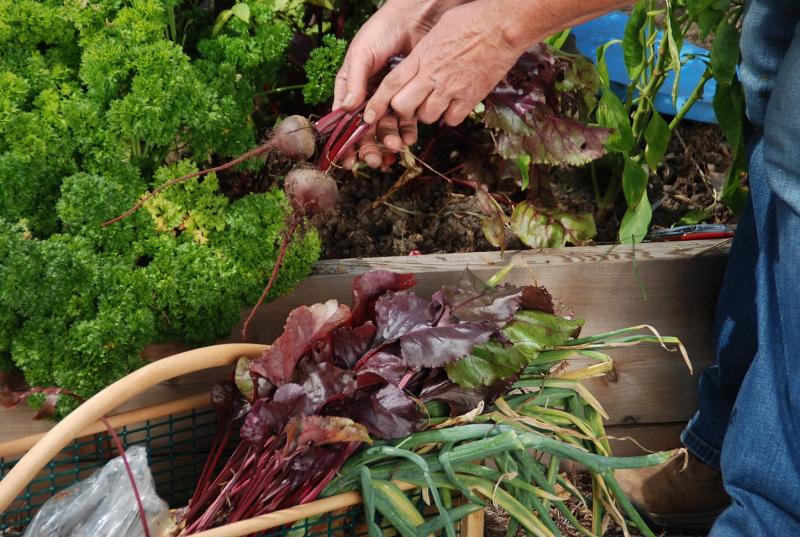Beets are one vegetable you can purchase most months of the year, but those you grow yourself taste the best. The good news is, there is still time to grow your own this season.
These flavorful vegetables contain fiber, vitamins A and C, calcium, potassium, phosphorous, and more iron than most vegetables. Betalain, the antioxidant and pigment in beets, can be used as a natural red dye and food coloring. In fact, it inspired the saying “red as a beet” and was used to provide that color in makeup.
Beets tolerate warm temperatures but germinate best during cooler weather. Plant seeds 1/2-inch deep and 1- to 3-inches apart every three to four weeks for a continuous harvest. Make your last planting about eight to 10 weeks before the first fall frost.
Beet seeds come as a cluster. Remove all but one seedling in the cluster soon after the seedlings appear, to provide the remaining ones the space they need to grow and reach full size. Take the sting out of this task by thinking of thinning as a form of harvesting. Use the beet greens removed during thinning as sprouts on sandwiches and salads, and in stir-fries and other dishes.
Reduce the amount of thinning needed with the help of seed tapes, which have seeds secured onto biodegradable tapes at the proper spacing. Just dig a shallow furrow, lay in the tape, and cover it with soil at the proper planting depth. You’ll spend a little more money on seed tapes but save lots of time.
Make sure your plantings receive sufficient moisture throughout the growing season. The flavor is best during cooler weather. All leaves and no edible roots is a problem you may have experienced when growing beets, radishes and carrots. Thinning and growing root vegetables in well-drained, fertile soil at the proper spacing is key to growing success. Improve heavy clay soils by working several inches of organic matter into the top 8 to 12 inches of soil. If this hasn’t worked in the past, try growing your beets in containers filled with a quality potting mix.
Harvest beets in about 50 to 60 days when the roots are 1- to 1.5-inches in diameter. Pull up or carefully dig the beets with a garden fork or shovel. Place the shovel several inches away from the root crops. Push it straight into the soil to avoid damaging the roots. Wiggle the shovel to loosen the soil and tilt to lift the beets free.
Trim the leaves back to an inch and leave the taproot intact. Rinse off the soil and allow the beets to dry before storing them in a perforated plastic bag in the refrigerator. Wash and further trim your beets as needed right before using them. Minimize scraping, cutting and slicing that will increase the loss of vitamins and flavor.
Most garden centers and mail-order catalogs still have beet seeds available for purchase. You’ll find red, purple, golden and even white beets to grow and enjoy. Select the variety that best suits your gardening and cooking needs.












































